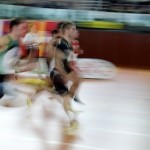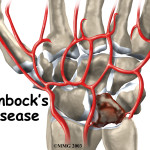My Favourite Dynamic Postural Control Objective Outcome Measure
Firstly, thanks for checking out the video. I hope that it was helpful and if you are not already using the Star Excursion Balance Test you will now. This is the information that I felt was too ‘nitty gritty’ to include in the video.
Reliability of the Star Excursion Balance Test
The reliability of the SEBT components utilised (i.e. the anterior, posteromedial and posterolateral) ranged from 0.82 to 0.87 (ICC3,1) (Plisky et al. 2006). To put this in perspective, it is of similar reliability to assessing knee flexion ROM with a universal goniometer (Brosseau et al. 1997).
Clinical Implications of This Measure
Assessing Intervention Effectiveness: as a reliable measure, you can use it to gauge an athletes improvements in dynamic postural control over time.
Injury Prediction: Plisky et al. (2006) showed that athletes with anterior left/right reach differences greater than 4 cm were 2.5 times more likely to sustain a lower limb injury over the course of a season. They also found that female athletes with a composite reach distance less than 94.0% of their limb length (measured from ASIS to lateral malleolus) were 6.5 times more likely to have a lower extremity injury!
Relevant to Athletic Population: the SEBT is sensitive enough to show dynamic postural control in a number of athletic populations including ACL deficient and Chronic Ankle Instability patients (Herrington et al. 2009; Hertel et al. 2006).
Conclusions
My conclusion is that is a sweet test. If you want to objectively assess an athlete’s responses to neuromuscular and postural control training (and honestly why would you not) this is your go-to. This can be a massive motivational tool, and also proves how helpful your exercises are. Also, if you want to “pre-screen” for injury this can also be used as a helpful predictor and should be a component of your assessment.
Go set it up right now, and enjoy your new favourite outcome measure.
References
Brosseau L, Tousignant M, Budd J, Chartier N, Duciaume L, Plamondon S, O’Sullivan JP, O’Donoghue S, Balmer S. Intratester and intertester reliability and criterion validity of the parallelogram and universal goniometers for active knee flexion in healthy subjects. Physiotherapy Research International 1997; 2(3):150-166
Herrington L, Hatcher J, Hatcher A, McNicholas M. A comparison of Star Excursion Balance Test reach distances between ACL defiient patients and asymptomatic controls. The Knee 16 (2009) 149–152
Hertel J, Braham RA, Hale SA, Olmsted Kramer LC. Simplifying the Star Excursion Balance Test: Analyses of Subjects With and Without Chronic Ankle Instability. J Orthop Sports Phys Ther 2006;36:131-137.
Plisky PJ, Rauh MJ, Kaminski TW, Underwood FB. Star Excursion Balance Test as a Predictor of Lower Extremity Injury in High School Basketball Players. J Orthop Sports Phys Ther 2006;36(12):911-919
Related Posts
Comments
Trackbacks
-
[…] This post was mentioned on Twitter by The Sports PT, The Sports PT. The Sports PT said: My favourite dynamic postural control measure – The Star Excursion Balance Test. http://bit.ly/9Eo7GN #physiotherapy #physicaltherapy […]










hey fellow profession,
im a brazilian academic of physiotherapy
and my work of completion of course is about a star test balance in injury of ACL and I don’t have found articles about SEBT, so you can send me your references on this post???
i really need…
thanks
Natália Goulart ([email protected])
Hi Natália,
Thanks for your interest. Unfortunately, I am not able to distribute PDF documents of articles given this is digital piracy. You can, however, access these articles via each Journal’s website e.g. Journal of Orthopaedic Sports and Physical Therapy: http://www.jospt.org/.
Hope this helps you out!
I currently using SEBT for my dissertation and I am at the point of putting the results into microsoft excel. What I wanted to know was what is the correct equation for measuring the composite scores?
Hope you can answer this
Thanks
Seti ([email protected])